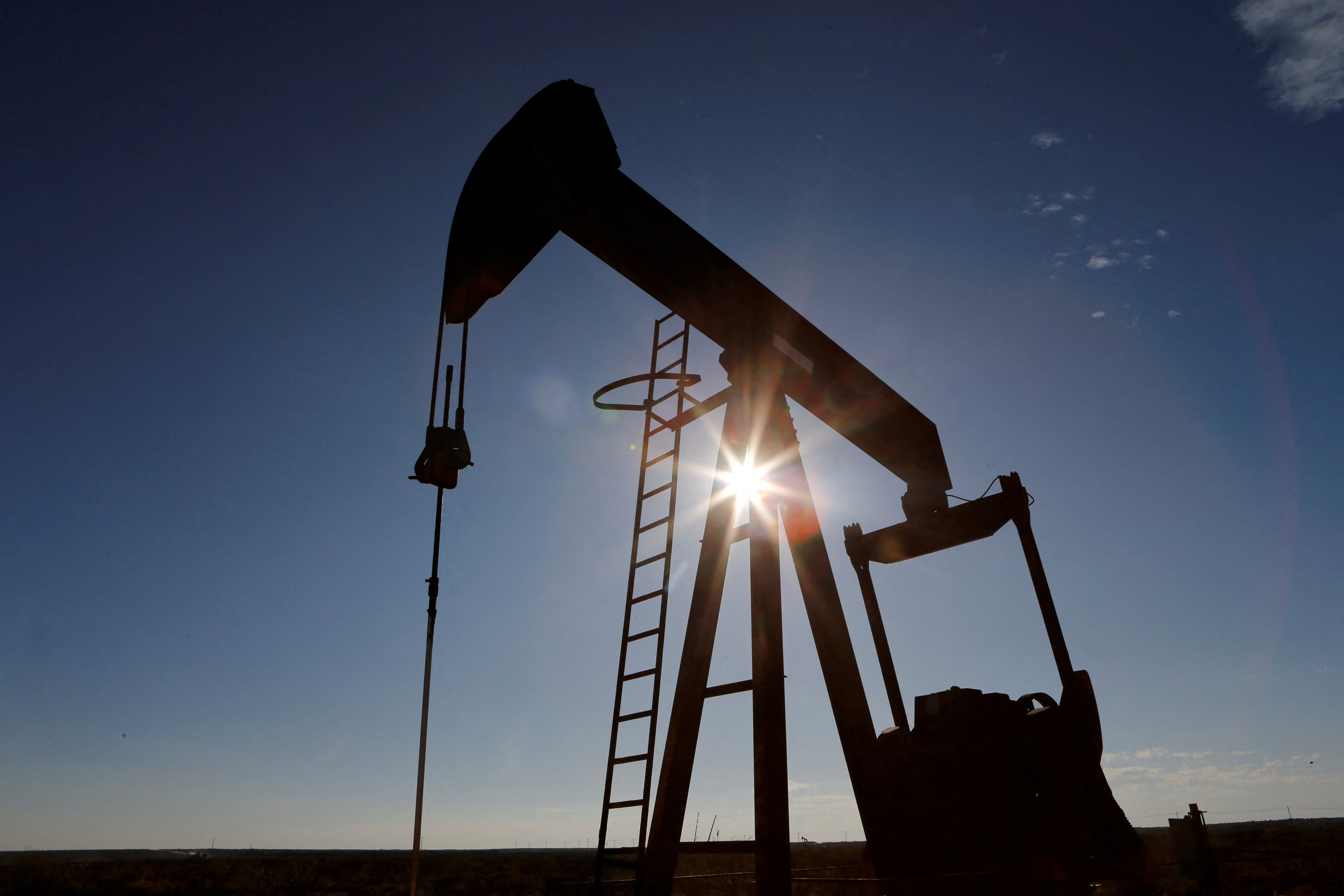
The sun is seen behind a crude oil pump jack in the Permian Basin in Loving County, Texas, U.S., on November 22, 2019. Picture taken on November 22, 2019. REUTERS/Angus Mordant/File Photo Get license rights
Nov 8 (Reuters) – Oil prices struggled on Wednesday after hitting more than three-month lows in the previous session, as concerns eased over slowing demand in the world’s top oil consumers, the United States and China.
Brent crude futures were up 15 cents at $81.76 a barrel by 0636 GMT, while U.S. crude futures were down 2 cents at $77.35 a barrel. Both fell to their lowest levels since July 24 on Tuesday.
“The market is clearly unconcerned about the potential for Middle East supply disruptions and is instead focused on easing the balance,” ING Bank analysts Warren Patterson and Eva Manthei said in a note to clients. Tight oil supply conditions.
U.S. crude stocks rose nearly 12 million barrels last week, market sources said late on Tuesday, citing U.S. Petroleum Institute data.
The US Energy Information Administration (EIA) will delay the release of weekly inventory data until the week of November 13.
U.S. crude oil production will rise slightly less than previously expected this year, while demand will slow, the EIA said Tuesday.
The EIA now expects total petroleum consumption in the country to fall by 300,000 bpd this year, reversing its previous forecast of a 100,000 bpd increase.
The firm also predicts that Venezuela’s crude oil production will increase by 200,000 barrels per day (bpd) by the end of 2024 and average less than 900,000 bpd by the easing of U.S. sanctions.
Also tempering supply tightness concerns, analysts at Goldman Sachs estimated seaborne net oil exports for the six OPEC countries that announced cumulative production cuts worth 2 million barrels per day (bpd) from April 2023, just 0.6 million bpd below April levels.
Data from China, the world’s biggest crude importer, raised doubts about the demand outlook.
Crude oil imports by the world’s second-largest economy showed strong growth in October, but China’s total exports of goods and services contracted at a faster-than-expected pace, adding to fears of weakening global demand.
Adding to the pressure on oil prices is a modest recovery from recent lows in the U.S. dollar (.DXY), which has made oil more expensive for holders of other currencies.
Despite economic challenges, including high inflation and interest rates, oil-producing group OPEC expects the global economy to grow and boost fuel demand.
Meanwhile, China is expected to meet its annual GDP growth target this year, the country’s central bank governor said on Wednesday. Beijing has set an economic growth target of 5% this year.
Reporting by Stephanie Kelly and Muyu Chu Editing by Sri Navaratnam and Kim Coghill
Our Standards: Thomson Reuters Trust Principles.